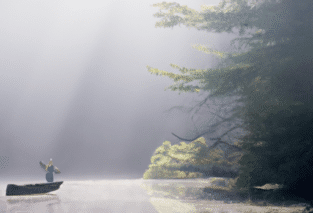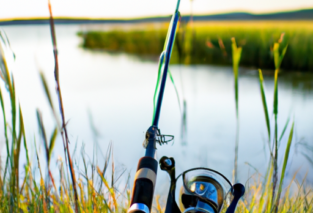Imagine a warm and sunny June day, with the gentle breeze caressing your face as you stand by the water’s edge. The decision has been made – you’re going fishing. But wait, is June a good month for fishing? Will you be able to catch anything? Don’t worry, because “Can You Go Fishing in June: Summer Fishing Tips and Techniques” has got you covered! Packed with valuable insights and expert advice, this guide will provide you with the knowledge and techniques you need to make the most of your summer fishing adventures. Whether you’re a seasoned angler or a beginner, get ready to reel in some incredible catches with the help of this indispensable fishing companion.

Choosing the Right Location for Fishing in June
When it comes to choosing the right location for fishing in June, there are a few factors to consider that can greatly impact your fishing success. One important factor to consider is the water temperature. Different fish species have different temperature preferences, so it’s crucial to choose a location where the water temperature aligns with the fish you’re targeting. For example, if you’re targeting trout, which typically prefer colder water, you might want to look for fishing spots with colder temperatures such as mountain streams or deep lakes.
Another important consideration is to research local fishing reports. These reports can give you valuable information about the current fishing conditions in specific areas. They often include information about recent catch rates, water levels, and any special regulations or restrictions that may be in place. By checking local fishing reports, you can get a sense of which areas have been producing good catches and plan your fishing trip accordingly.
In addition to water temperature and fishing reports, it’s also worth looking for areas with vegetation and structure. Vegetation provides cover and serves as a food source for many fish species. Look for spots with submerged weeds, lily pads, or grassy areas where fish are likely to hide and feed. Similarly, structure such as submerged rocks, fallen trees, or man-made structures like docks can attract fish, providing them with hiding places and ambush points. By targeting areas with vegetation and structure, you increase your chances of hooking into some quality fish.
Lastly, it’s crucial to check for any fishing regulations or restrictions that may be in place. Different bodies of water may have different rules regarding bag limits, fish size restrictions, or even specific fishing methods that are allowed. Make sure to consult local fishing regulations or websites to ensure you fish within the legal limits. Respecting these regulations not only helps preserve fish populations but also avoids unwanted penalties or fines.
Best Fishing Times in June
Knowing the best fishing times in June can significantly increase your chances of success on the water. When it comes to fishing in June, early mornings and late evenings are generally the most productive times to be on the water. During these times, the sun is lower, and the temperatures are usually cooler, making fish more active and willing to feed.
It’s important to avoid fishing during the midday when the sun is high. During this time, the sunlight is intense, and the water temperature tends to rise, causing fish to be less active and seek shelter in deeper, cooler waters. However, there are always exceptions to this rule, and some specific species may still be active in the midday heat. Researching the behavior and habits of the fish you’re targeting can give you insight into their activity patterns and help you optimize your fishing times.
Another factor to consider when fishing in June is the moon phase. The moon has a significant impact on fish behavior, especially during specific moon phases such as the new moon and full moon. During these phases, fish tend to be more active and feed more aggressively. Fishing during these moon phases can increase your chances of landing a trophy catch. However, it’s essential to keep in mind that weather conditions and local factors can also influence fish behavior, so it’s always a good idea to have a backup plan and be adaptable to changing conditions.
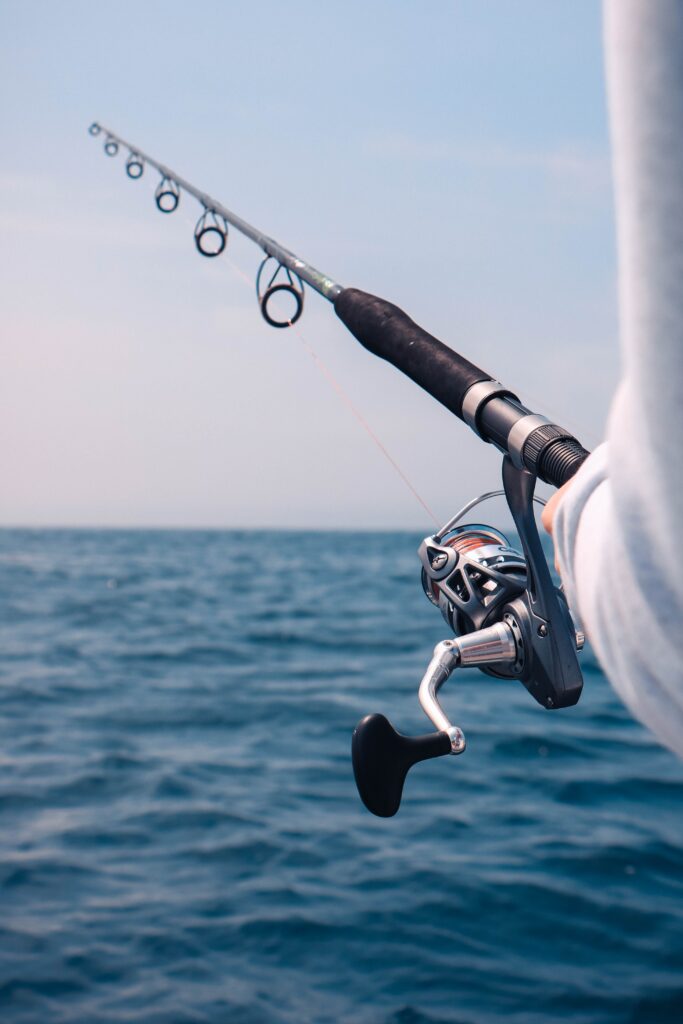
Selecting the Right Fishing Gear
Selecting the right fishing gear is essential for a successful fishing trip in June. The appropriate fishing rod and reel can make a significant difference in your fishing experience. Consider the type of fish you plan to target and choose a rod and reel combo that matches the size and strength of the species you’re after. For example, if you’re targeting larger game fish like bass or catfish, a medium-heavy rod and a reel with a higher gear ratio would be suitable. On the other hand, if you’re planning to fish for smaller species like trout or panfish, a lighter rod and reel combo would be more appropriate.
Equally important is selecting the right fishing line. Different types of fishing lines have different characteristics that make them suitable for specific fishing scenarios. Monofilament lines are versatile and suitable for a wide range of fishing applications. They have good strength and are relatively affordable. However, if you’re targeting larger fish or fishing in areas with heavy cover, a braided line might be a better choice. Braided lines have excellent strength and sensitivity, allowing you to feel even the most subtle of fish bites. Additionally, they have a smaller diameter, which allows for longer casts and better control over your lures or bait.
When it comes to bait or lures, it’s essential to consider the type of fish you’re targeting and their feeding habits. Research the species you plan to fish for and determine what bait or lures are most effective for enticing them. Live bait such as worms, minnows, or crickets can be highly effective for a wide range of fish species. Artificial lures such as spinnerbaits, crankbaits, or soft plastics can also yield great results. Experimentation and learning from local anglers or fishing resources in the area can help you determine the best bait or lures to use for the specific fish you’re targeting.
Lastly, don’t forget to pack essential fishing accessories. These can include items like pliers or forceps for hook removal, a scale or measuring tape for weighing or documenting your catches, and a tackle box or bag to keep all your gear organized. Additionally, it’s always a good idea to carry a first aid kit and include items like sunscreen, insect repellent, and a hat to protect yourself from the sun and other elements while fishing.
Understanding the Behavior of Fish in June
Understanding the behavior of fish in June is crucial for increasing your chances of success on the water. As the summer season approaches, fish feeding habits and preferred areas can change, and being aware of these changes can greatly impact your fishing strategy.
One important aspect to consider is the feeding habits of fish during the summer. During warmer months, fish are generally more active and have a higher metabolism. This means they need to eat more frequently to sustain their energy levels. As a result, they will be more likely to be actively seeking out food sources. Be mindful of the type of bait or lures you’re using and try to match the hatch to imitate the natural food sources that fish are feeding on. Observing the waters for signs of baitfish or insect activity can also give you clues about what the fish are feeding on.
Understanding the preferred areas where fish tend to congregate in the water can also increase your chances of success. Some fish species prefer specific areas of the water column or specific types of structure to hide, feed, or spawn. For example, bass tend to seek out areas with submerged vegetation, while trout may prefer deeper, cooler waters. Understanding these preferences can help you target your efforts in the most productive areas and increase your chances of hooking into fish.
It’s also important to consider the effect of weather on fish behavior. Changes in weather conditions such as rain, wind, or temperature fluctuations can have a significant impact on fish activity. Learning how to adapt to changing weather conditions can make a difference in your fishing success. For example, after a heavy rainfall, fish may be more prone to bite as the runoff brings food and nutrients into the water. On the other hand, during a hot, calm day, fish may seek shelter in deeper waters or under cover, requiring you to adjust your fishing approach accordingly.
By understanding the behavior of fish in June and being adaptable to changing conditions, you can greatly increase your chances of landing that prized catch.
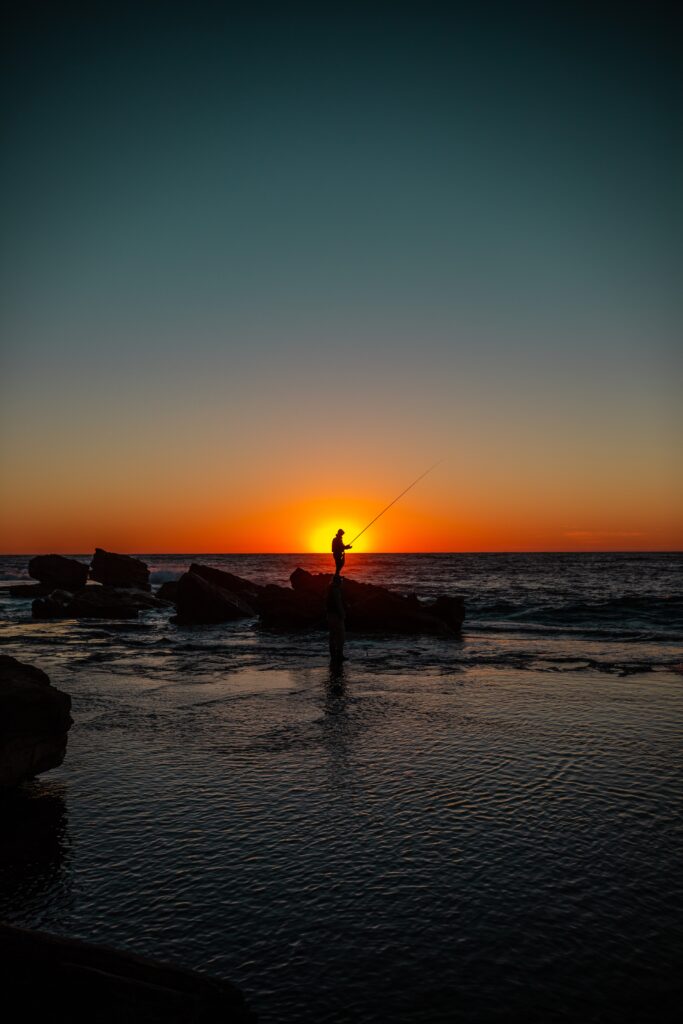
Freshwater Fishing Techniques for June
When it comes to freshwater fishing techniques in June, there are several approaches you can take to maximize your chances of success. Here are some techniques that can yield great results during this time of year.
Topwater bass fishing
With the warmer water temperatures in June, bass become more active and often feed near the surface. This presents an excellent opportunity for topwater bass fishing. Using lures such as buzzbaits, poppers, or frogs, you can replicate the movements of injured prey on the water’s surface, enticing bass to strike. Keep in mind that early mornings and late evenings are the best times for topwater bass fishing, as bass are more likely to be feeding near the surface during these periods.
Drop-shot rig for finesse fishing
If you’re targeting finicky fish or fishing in clear, heavily pressured waters, finesse fishing techniques like the drop-shot rig can be highly effective. The drop-shot rig involves using a small, lightweight, finesse-style bait rigged above a weight. This setup allows you to present your bait vertically and keep it suspended in the strike zone for extended periods. It’s particularly effective for bottom-dwelling fish such as bass or panfish that may be less willing to chase after fast-moving lures.
Using crankbaits for aggressive fish
Crankbaits are a versatile and effective tool for targeting aggressive fish such as bass, pike, or walleye. These lures imitate wounded prey fish and have a diving lip that allows them to dive down to a certain depth. By varying the speed of your retrieve and experimenting with different depths, you can entice fish to strike. Crankbaits can be particularly effective when fishing around submerged structure, drop-offs, or along rocky shorelines.
Trolling for various species
Trolling involves dragging lures or bait behind a moving boat to cover a large area of water and locate actively feeding fish. This technique can be productive for various species, including trout, walleye, or salmon. By using a depth finder or fishfinder, you can locate the fish’s preferred depth and troll your baits or lures at that depth. Adjusting your trolling speed and using different types of lures can help you determine what the fish are responding to on any given day.
Bottom fishing for catfish and carp
Bottom fishing is a tried-and-true technique for targeting fish like catfish and carp. These species are often found near the bottom of the water column, feeding on the bottom-dwelling organisms. Using baits such as nightcrawlers, cut bait, or stink baits, you can entice these fish to bite. Patience is key when bottom fishing, as it may take some time for the fish to find your bait. Consider using a fishing rod holder or rod pod to keep your rod secure while waiting for a bite.
By incorporating these freshwater fishing techniques into your arsenal, you’ll have a solid foundation for a successful fishing trip in June.
Saltwater Fishing Techniques for June
Saltwater fishing in June offers a multitude of exciting opportunities to catch a variety of species. Whether you’re fishing from the shore, a pier, or a boat, here are some effective saltwater fishing techniques to consider for this time of year.
Surf fishing for species like snook and pompano
Surf fishing is a popular technique for targeting species such as snook, pompano, or redfish. When surf fishing, it’s crucial to pay attention to the tide, as different species tend to feed more actively during certain tidal stages. Using surf rods and casting long distances, you can present your bait or lures in the areas where fish are actively feeding. Popular baits for surf fishing include live or dead shrimp, sand fleas, or artificial lures such as spoons or jigs.
Jigging for bottom-dwelling fish
Jigging is a versatile and effective technique for targeting bottom-dwelling fish such as grouper, snapper, or flounder. This technique involves using a jig, which is a weighted lure, and imparting an up-and-down motion to imitate injured prey. By bouncing the jig off the bottom or jigging it near structures like reefs or wrecks, you can entice fish to strike. Different colors and sizes of jigs can be used depending on the species you’re targeting and the water conditions.
Deep sea trolling for pelagic species
For those with access to deep-sea or offshore waters, trolling can be a highly productive technique for targeting pelagic species such as tuna, mahi-mahi, or marlin. Trolling involves dragging a combination of lures or bait behind a moving boat at various depths. The key to successful trolling is locating areas where these pelagic species are likely to be, such as current edges, temperature breaks, or areas with significant baitfish activity. Using specialized trolling rods, reels, and lines designed for offshore fishing will maximize your chances of landing these prized game fish.
Targeting nearshore reefs and structures
When fishing in nearshore waters, targeting reefs and other underwater structures can be highly productive. These areas often provide shelter and feeding opportunities for a variety of fish species. Depending on your target species, you can use a combination of live bait, cut bait, or artificial lures to entice fish to bite. Rigging your baits with appropriate weights or floats can help keep them near the structure and in the strike zone.
Fly fishing in saltwater
For anglers looking to challenge themselves or try something different, fly fishing in saltwater can be a thrilling experience. It requires skill and precision to cast a fly line and mimic the movement of baitfish or crustaceans. Whether you’re targeting species like bonefish, tarpon, or striped bass, fly fishing allows for accurate presentations and delicate presentations. Matching the hatch with the right fly patterns and understanding the fish’s behavior and feeding patterns are crucial for success.
By incorporating these saltwater fishing techniques into your fishing repertoire, you’ll be well-equipped to tackle the diverse and exciting opportunities that June has to offer.
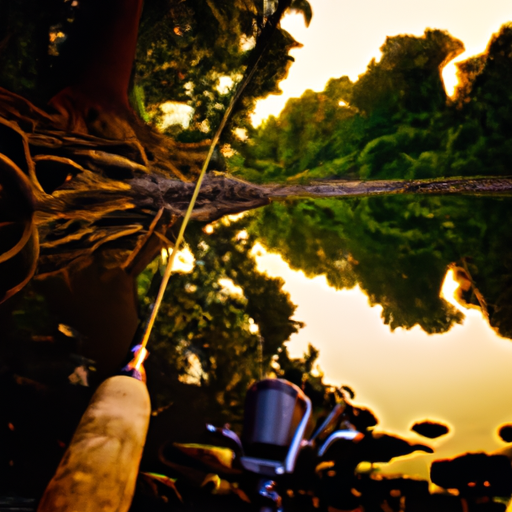
Tips for Catch and Release in June
Practicing catch and release is not only ethical but also essential for maintaining healthy fish populations. Here are some tips to ensure the safe handling and release of fish during your fishing trips in June.
Handle fish with care to minimize stress
When handling fish, it’s important to minimize stress on the fish to ensure their survival after release. Wet your hands before handling the fish to reduce the removal of their protective slime coat, which helps protect them from infection and disease. Avoid squeezing or gripping the fish too tightly, as this can cause internal damage. Supporting the fish’s weight properly when lifting or holding it can also prevent injuries.
Use barbless hooks for easier release
Using barbless hooks is highly recommended when practicing catch and release. Barbless hooks are easier to remove and cause less damage to the fish’s mouth or jaw. In the event of hooking a fish deeply, use long nose pliers or forceps to carefully and gently remove the hook. If the fish has swallowed the hook, it’s best to cut the line as close to the hook as possible.
Avoid keeping fish out of the water for too long
Keeping fish out of the water for extended periods can cause them unnecessary stress and harm. When handling fish for catch and release, it’s important to minimize the time they spend out of the water. If you need to take a photo, make sure to have your camera ready beforehand, and keep the fish submerged as much as possible during the process. Avoid dragging the fish on dry surfaces or placing them on hot surfaces, as this can damage their delicate scales and fins.
Revive fish properly before releasing
Before releasing the fish, it’s crucial to ensure they have fully recovered and are capable of swimming away on their own. To revive fish, gently hold them in an upright position underwater, facing into the current if possible. Allow water to flow over their gills, providing them with oxygen. Once the fish shows signs of regained strength, such as vigorously swimming away or maintaining an upright position, you can release it back into the water.
By following these catch and release tips, you can actively contribute to the conservation of fish populations and maintain the integrity of our fisheries for future generations to enjoy.
Safety Precautions for Summer Fishing
Safety should always be a top priority when embarking on a fishing adventure, especially during the summer months. Here are some essential safety precautions to keep in mind for a safe and enjoyable fishing experience.
Stay hydrated and protect yourself from the sun
The summer sun can be intense, so it’s crucial to stay hydrated and protect yourself from harmful UV rays. Drink plenty of water throughout your fishing trip to avoid dehydration, especially if you’re fishing in hot weather or spending long hours under the sun. Wearing a wide-brimmed hat, sunglasses, and applying sunscreen will help protect your skin from the sun’s harmful rays. Staying hydrated and protected will prevent heatstroke or sunburn, ensuring a more enjoyable fishing experience.
Wear appropriate clothing and footwear
Wearing appropriate clothing and footwear is essential for comfort and safety while fishing in the summer. Opt for lightweight, breathable clothing that provides sun protection and helps keep you cool. Avoid wearing dark-colored clothing that absorbs heat. A good pair of fishing or water shoes with non-slip soles will protect your feet from sharp rocks or other potential hazards in the water.
Be cautious of lightning storms
Summer often brings thunderstorms and the risk of lightning strikes. Keep a close eye on weather forecasts before heading out for a fishing trip, and be prepared to seek shelter if thunderstorms are predicted in your area. If you’re on the water and see dark clouds or hear thunder, it’s a sign to return to shore immediately. Lightning can strike from a distance, so it’s always better to err on the side of caution and prioritize your safety.
Share your fishing plans with someone
Before heading out for a fishing trip, it’s always a good idea to let someone know about your plans. Share your fishing itinerary, including the fishing location, estimated return time, and contact information for emergency situations. This ensures that someone is aware of your whereabouts and can alert authorities if needed. In case of an emergency, having someone informed of your plans can expedite the search and rescue process, providing you with an added layer of safety.
By adhering to these safety precautions, you can focus on enjoying your fishing adventures while mitigating potential risks and ensuring a safe experience for everyone involved.
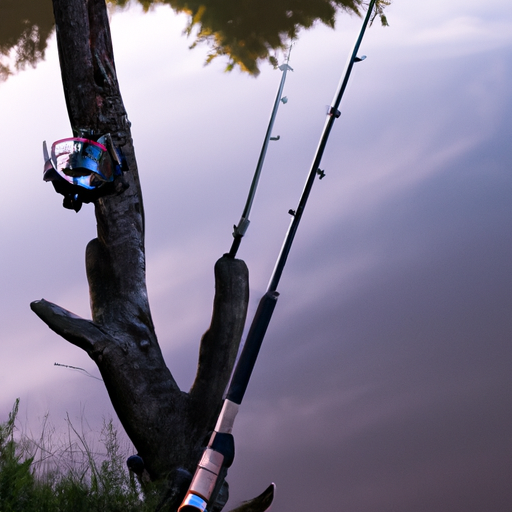
Preparation and Planning for a Fishing Trip in June
Proper preparation and planning are key to having a successful fishing trip in June. By taking the time to prepare in advance, you can ensure that you have all the necessary equipment, knowledge, and permits to make the most of your time on the water. Here are some essential steps to consider when preparing for a fishing trip in June.
Check and prepare your fishing gear in advance
Before setting out on your fishing trip, it’s crucial to check your fishing gear and ensure that everything is in proper working order. Inspect your rods and reels for any signs of damage or wear and tear, and make any necessary repairs or replacements. Check the condition of your fishing line and replace it if it shows signs of fraying or damage. Ensure that your tackle box is fully stocked with a variety of lures, hooks, weights, and other accessories. By properly preparing your fishing gear, you’ll avoid any unnecessary setbacks or disappointments on the water.
Research the local fishing regulations and licenses
Familiarize yourself with the local fishing regulations and licenses for the area where you plan to fish. Different bodies of water may have different rules and restrictions, such as bag limits, size limits, or specific fishing methods that are allowed or prohibited. It’s important to know and adhere to these regulations to avoid penalties or fines. Check with the local fishing authorities, consult fishing guidebooks or websites, or reach out to the local fishing community for up-to-date information on any specific regulations in the area.
Pack necessary supplies such as food and water
Packing the necessary supplies is essential for a comfortable and enjoyable fishing trip. Bring enough food and water to keep you hydrated and energized throughout the day. Consider the duration of your fishing trip and the availability of food and beverage sources in the area. It’s always better to pack more than you think you’ll need, as unexpected circumstances or extended fishing hours may require extra provisions.
Plan for transportation and accommodations
If your fishing trip involves traveling to a different location, it’s crucial to plan for transportation and accommodations in advance. Research the best routes to your fishing destination and consider any potential traffic or road closures. If you’re planning to camp or stay overnight, make reservations at campgrounds or hotels well ahead of time, especially during peak fishing season. Being organized with your transportation and accommodations ensures a smooth and stress-free fishing trip.
Consider hiring a fishing guide or charter
For anglers looking to enhance their fishing experience or explore new waters, hiring a fishing guide or charter can be a great option. Professional guides or charters have local knowledge and expertise that can greatly increase your chances of success. They know the best fishing spots, techniques, and regulations in the area and can provide valuable instruction and guidance. Whether you’re a novice angler or an experienced one, hiring a fishing guide or charter can take your fishing trip to the next level.
By following these preparation and planning tips, you’ll set yourself up for a successful and enjoyable fishing trip in June. Remember to be adaptable, keep an open mind, and embrace the adventure that awaits you on the water.
Proper Fish Handling and Cleaning in June
Proper fish handling and cleaning are crucial steps to maintain the quality and taste of your catch after a successful fishing trip in June. By following these guidelines, you can ensure that your fish are handled responsibly and that you’re able to enjoy a delicious meal or share your catch with others.
Use a quality landing net to land fish
Using a landing net when landing a fish is highly recommended, especially for larger or more challenging species. A landing net helps prevent the fish from thrashing about and potentially breaking off the line or causing injury. When using a landing net, avoid lifting the fish too high or removing them from the water for too long. Keep the fish submerged in the water while dislodging the hook and properly securing them for measurement or release.
Handle and unhook fish with wet hands or a towel
When handling fish, it’s important to wet your hands or use a wet towel to minimize damage to their protective slime coat. The slime coat helps protect fish from infection and disease, and removing or damaging it can be harmful to the fish. Wet hands or a wet towel also provide a better grip, allowing for a safer and more secure handling process. Avoid using dry hands or rough materials like a towel to prevent unnecessary stress or injury to the fish.
Clean fish immediately after catching
After catching a fish, it’s important to clean it as soon as possible to preserve its freshness and quality. Proper cleaning involves removing the scales, internal organs, and other undesirable parts of the fish, leaving clean fillets or whole fish ready for cooking or storage. If you’re unsure how to clean fish properly, consider seeking guidance from local fishermen or experienced anglers, or consult online resources or tutorials.
Properly store and dispose of fish waste
When it comes to storing your catch, it’s crucial to keep fish cool to prevent spoilage. Use a cooler or insulated bag with ice or cold packs to maintain a cold temperature and ensure the highest quality of your fish. Clean the cooler or bag before use to avoid any cross-contamination that could affect the taste or freshness. Additionally, it’s important to dispose of fish waste properly to minimize any negative environmental impacts. When cleaning fish, dispose of the waste in designated fish cleaning stations, bury it away from the water, or follow local regulations for fish waste disposal.
By following these proper fish handling and cleaning practices, you can maintain the quality of your catch and ensure the best possible dining experience with your freshly caught fish.
In conclusion, June provides excellent fishing opportunities for anglers of all skill levels. By choosing the right fishing location, considering the water temperature, researching local fishing reports, and paying attention to any fishing regulations or restrictions, you can increase your chances of a successful fishing trip.
Understanding the best fishing times in June, such as early mornings and late evenings, and considering the moon phase can optimize your fishing success. Selecting the right fishing gear, including choosing the appropriate fishing rod and reel, selecting the right fishing line, and considering the type of bait or lures to use, can help you target the specific fish species you’re after. Packing essential fishing accessories, such as pliers, a scale, and a tackle box, ensures you have everything you need for a smooth fishing experience.
Being knowledgeable about the behavior of fish in June, including their feeding habits and preferred areas, and considering the effect of weather conditions on fish behavior, can greatly improve your fishing strategy. Learning and implementing freshwater and saltwater fishing techniques specific to June can increase your chances of success, whether it’s topwater bass fishing, using a drop-shot rig for finesse fishing, jigging for bottom-dwelling fish, trolling for pelagic species, or fly fishing in saltwater.
To ensure the well-being of fish populations, practicing catch and release is essential. By handling fish with care, using barbless hooks, avoiding keeping fish out of the water for too long, and properly reviving fish before releasing them, you can contribute to the conservation of fish populations and maintain the integrity of our fisheries.
Safety precautions, such as staying hydrated, protecting yourself from the sun, wearing appropriate clothing and footwear, being cautious of lightning storms, and sharing your fishing plans with someone, are necessary for a safe and enjoyable fishing experience, especially during the summer months.
Preparing and planning for a fishing trip in June involves checking and preparing your fishing gear, researching local fishing regulations and licenses, packing necessary supplies, planning for transportation and accommodations, and considering the option of hiring a fishing guide or charter.
Finally, practicing proper fish handling and cleaning, including using a quality landing net, handling and unhooking fish with wet hands or a towel, cleaning fish immediately after catching, and properly storing and disposing of fish waste, ensures the quality and taste of your catch.
By following these comprehensive tips and techniques, you’ll be well-equipped to have a successful and enjoyable fishing experience in June. So grab your gear, head to your chosen fishing spot, and enjoy the thrill of reeling in your next catch. Happy fishing!



